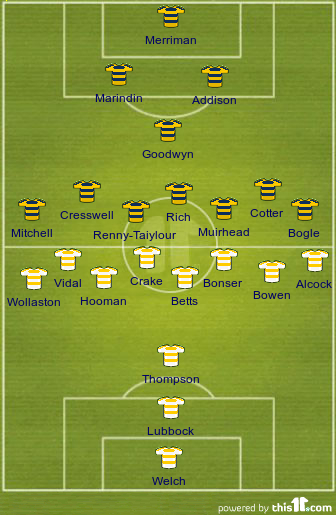Along with EC Morley, Charles William Alcock was the leading administrator in the early days of football. In combination with his elder brother John, Alcock had been instrumental in the formation of the Forest Football Club and John Alcock represented Forest at the inaugural meeting of the FA. CW Alcock succeeded Morley as the secretary of the FA in 1870 and it was in this role that he proposed what would go on to be the most important domestic cup competition in the world.
 |
| CW Alcock |
On taking up the post of secretary Alcock recalled his days at Harrow where he had participated in an inter-house knockout football competition. His proposal of a “Challenge Cup” in which all members of the FA should take part was drafted on July 20th 1871 and elicited a positive response from those invited. Fifteen entries to the tournament were accepted (out of fifty members of the FA at the time): Barnes, Civil Service, Crystal Palace, Clapham Rovers, Hitchin, Maidenhead, Marlow, Queen’s Park, Donington Grammar School, Hampstead Heathens, Harrow Chequers, Reigate Priory, Royal Engineers, Upton Park and Wanderers.
Queen’s Park were permitted a bye to the semi-finals on account of the distance and cost of travelling. The club were only able to travel to London for the game due to a special public subscription which was raised to pay for them. When they reached London they faced the Wanderers (the new name of the Forest club which had been changed in1864), and they managed a valiant draw. However, given the additional cost that would have been required for them to stay for a replay they returned to Scotland allowing the Wanderers to progress to the final.
 |
| Wanderers v. Royal Engineers (above) formations |
Their opponents in the final, Royal Engineers, entered the game as heavy favourites at 7/4 on in recognition of their superior combination play. The 2,000 spectators though who turned up at the Kennington Oval (and paying a shilling a piece!) were treated to a far more even affair. Sadly for the Royal Engineers one of their forwards, Lieutenant Edmund Cresswell, suffered a broken collarbone in the tenth minute of the match and though “he maintained his post to finish the game” he was little more than a passenger in the game from that point on.
The Royal Engineers could find no response, and the result ended 1-0. The game was judged by Sporting Life to have been a “most pleasant contest” and the tournament had certainly proved popular. A month later EC Morley presented the “little tin idol”, as the first FA Cup came to be known, to the Wanderers team. So began the oldest cup competition of them all.

2 comments:
Looking at the tactical scheme, it wasn't actually a "pyramid" formation in those days, but more like a "T" formation.
Correct. It wasn't until the 1880s that the "pyramid" formation, or 2-3-5, actually became commonplace. I'll look more at the creation of the system and those that followed it in the weeks to come.
Post a Comment